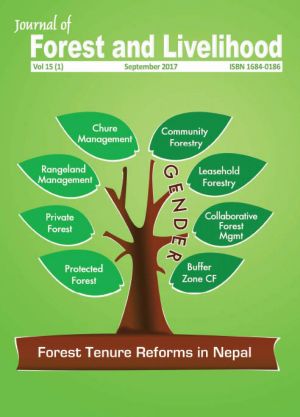Buffer Zone Community Forestry in Nepal: Examining Tenure and Management Outcomes
DOI:
https://doi.org/10.3126/jfl.v15i1.23096Keywords:
Buffer zone, buffer zone community forest, conservation, livelihoods, tenureAbstract
This paper examines the transfer of management rights over forests and natural resources and exercise of such rights by various sections of local communities in Protected Area (PA) buffer zones in Nepal. The study is based on an extensive review of government policy documents, available published and grey materials. The paper has also been drawn from the long experiences of the authors working in PAs and buffer zones in various parts of the country. We found that Buffer Zone Community Forests (BZCFs) have so far made significant contribution to biodiversity conservation, local livelihoods and institutional building in buffer zones. However, we also found a range of critical challenges in realising clear, comprehensive and secure rights by the local communities. Effective functioning of buffer zone community forestry is undermined by ever-increasing demand of forest products, lack of needed management autonomy and support from the PA management authorities, absence of clear policy guideline, increasing human-wildlife conflict and persistence of social exclusion of women, poor and marginalised. We argue that a better understanding and attention to address tenure related challenges in BZCFs would aid both conservation and local livelihoods and thereby enhance socio-ecological resilience of buffer zone communities.
Downloads
Downloads
Published
How to Cite
Issue
Section
License
CC-BY-NC: This license allows reusers to distribute, remix, adapt, and build upon the material in any medium or format for noncommercial purposes only, and only so long as attribution is given to the creator.





